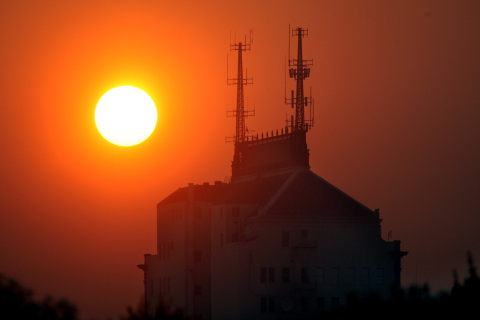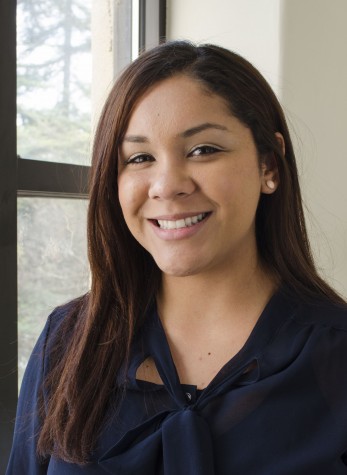Athletes Continued Practice During Smoke Crisis

Photo by: Mike Crosse
The sun rises on Tuesday, July 8, 2008, over the Fresno, Calif. skyline amid a haze. High temperatures in the Central Valley has contributed to poor air quality in the area. (AP Photo/The Fresno Bee
Callie Johnston, a sophomore at Fresno City College, said when she looked out the window on Sept. 11, everything was coated by the ashes and debris from the rough fire near Dunlap and Crabtree and fires from Sequoia National Forest and Kings Canyon Park.
“I was wondering if the window was actually that disgusting, or the sky looked that disgusting; turned out to be the sky,” Johnston said.
Despite the ashy rainfall, practice continued for many FCC athletes.
“We’re athletes, so we’re supposed to train in any type of weather or conditions,” Adriel Gibbs, a track and field athlete said. However, Johnston added that it was harder to breathe.
“Their health should be their first concern,” Lisa Chaney, FCC’s health services coordinator said.
“It’s a fine line to be able to continue.”
Chaney added, “Even when you’re past your years of competing, you still have your health to deal with.”
Another FCC athlete, tennis player Payton Morrison said she has been experiencing symptoms as well.
“I get really hot,” Morrison said. “Sometimes I see spots.”
FCC’s first home football game of the season on Sept. 12 was delayed from 5 p.m. to 7 p.m..
Zack Frazier, a defensive end for the FCC football team, said the game was postponed to later in the day so that the heat and ash would not affect the players as much.
Despite conditions, Frazier was happy the game was not canceled.
“We were practicing all week for that game,” Frazier said.
Later, Frazier said he had bad asthma in his younger years and that the smoke and ashes are causing his symptoms to recur.
“I can’t sleep, because I can’t really breathe that much,” Frazier said.
Chaney said the health center is experiencing a 20 percent increase in students complaining of headaches, sinus issues and cough.
“That’s the start of it,” Chaney said. “Over time, that cumulative effect can be very hard on our body and can result in respiratory issues 20 years down the line.”
Chaney says students who are experiencing such symptoms should come to the health center or seek a physician to check their peak flow level. A peak flow meter measures how much breath the lungs use to blow into the gadget. This can be used to determine if a person is developing asthma or if the asthma is worsening.
Over the weekend, the San Joaquin Valley Air District alerted that the valley was under code orange, also known as the Unhealthy for Sensitive Groups [USG] such as older adults, children or people with lung issues.
Furthermore, the San Joaquin Valley Air District Sept. 11 news release warned, Fine-particulate matter [PM2.5] can cause serious health problems including lung disease, asthma attacks and increased risk of heart attacks and stroke.”
PM 2.5 are microsized particles found in wildfire smoke.
Chaney says the best way to protect oneself from developing asthma is to support measures for cleaner air.
The San Joaquin Valley Air District held a meeting on Sept. 16 to discuss the modernization of the Clean Air Act.
The San Joaquin Valley has decreased emissions by over a hundred thousand tons and air pollution has been reduced by 80 percent.
Furthermore, the valley has the strictest air regulations on stationary sources such as farms and dairies as well as cars and trucks. Yet, stationary sources only make up 20 percent. The valley needs another 90 percent reduction to meet current standards which will be implemented by stringent regulations.
Dolores Weller, a representative from the Central Valley Air Quality Association, along with the American Lung Association, express their concerns about the new proposal and argued that the proposal should be rejected, or at least not move forward.
There is concern about whether the revision of the act is promoting cleaner air. Weller says there is confusion on what is being voted on due to the language of the proposal.
Weller says the proposal seeks to eliminate three percent reasonable progress every year.
Weller said, “That’s definitely gutting and weakening clean air act.”

Andrea Figueroa Briseno is currently the News Editor for the student run newspaper, The Rampage. She is a first year student at Fresno City College and...
